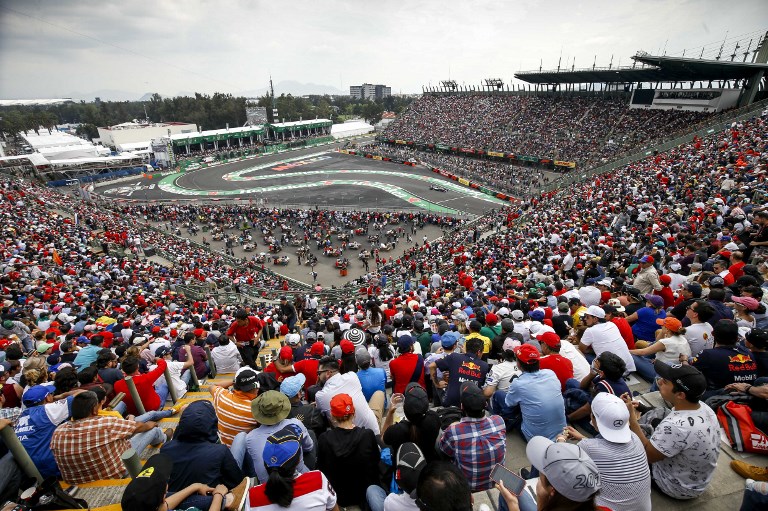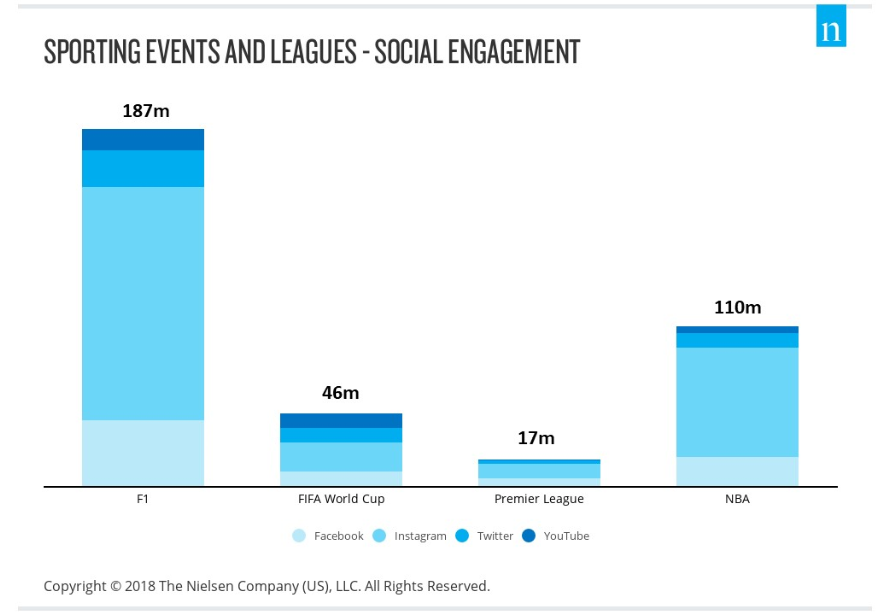
As the 2018 F1 season draws to a close and Lewis Hamilton is crowned for the fifth time as World Champion, we take a look back at some of the highlights of what made this year special. New audiences flourished around the world as free-to-air broadcast schedules were altered, helping to grow media value for sponsors. The increased reliance on social media as a vehicle to promote, inform and entertain fans also played a big role as buzz peaked and troughed throughout what, for Mercedes at least, was another stellar season.
NEW RACES AND NEW AUDIENCES IN 2018
2018 saw the reintroduction of two much loved races, the French and German Grand Prix. The latter returning after a two-year break.
It was in France, however, where the sport was welcomed back with open arms, a race which returned after a 10-year absence, and as to be expected, domestic audiences soared. In total across the first half of the year, TV viewing figures jumped 52% across the country, as broadcasters tuned back in. The return of national public broadcaster TF1 for the Monaco and French Grand Prix accounted for a substantial proportion of that viewing public, whilst there was a +43% increase in audiences on Canal+ France as it produced 74 broadcasts, 18 more airings than in 2017.
THE CHANGING FACE OF F1
Gender equality was very much in the spotlight for F1 which made several steps to promote women in the sport. Children replaced ‘Grid Girls’ in F1 pre-race ceremonies, a move which helped to underline the sport’s new owners’ efforts in putting families at the centre of the sport and encourage more children to engage with F1.
On-track, Sauber introduced a female Colombian racing driver, Tatiana Calderon, as their official test driver in March. Later in June, female drivers were back in the headlines. One of the most engaging and popular F1 related posts on Facebook surrounded a momentous occasion for female drivers. Not only in the racing world, but more importantly as a step towards global gender equality; Aseel Al-Hamad, a woman from Saudi Arabia, drove a lap at the Circuit Paul Ricard to mark the end of the ban of female drivers in her country.
As audiences grow and the sport widens its appeal to women, children and through esports, gamers and armature racers – the question of “how long will it take until we see a female driver in an F1 driver seat” began to build solid momentum at the midway point of the 2018 season.
NEW CONTENT STREAMS
The start of the season brought with it new car designs which created a significant amount of buzz, in particular Red Bull’s RB14 and Ferrari’s SF-71H and social media didn’t fail to deliver. Red Bull’s new car racking up over 300,000 likes and was one of the year’s ‘best performing’ posts. Car design was certainly the order of the season on social, as the 2021 futuristic concept cars were also presented online for the first time, a post which generated over 320,000 likes.
2018 has been a year for big milestones in F1, played out largely through social media to an ever increasing and engaging online audience. Some of the biggest spikes in engagement included Aseel Al-Hamad’s maiden race, the return of the French Grand Prix, Hamilton’s fifth World Championship matching racing Juan Manuel Fangio, and the 24th anniversary since the passing of F1 legend Ayrton Senna, back in May.
Social media now accounts for 5% of the total media value created during Formula One for teams and their sponsors. F1 received 187 million engagements from posts that included brands in, more than other large sporting properties around the world. This was largely due to new content streams which provides logo exposure for partners.

Owned Accounts Only. Date Ranges used were different for each property FIFA – March 1st – July 31st 2018 F1 -January 1st 2017 – 31st December 2017 Premier League – 1st August 2017 – 31st May 2018 NBA – October 17th 2017 – June 9th 2018. Only looked at Engagements from posts including sponsors from each property
TUNING IN: F1’S GROWING TV AUDIENCES
Year-on-year, global TV audiences have levelled out, with the audience standing at 1.310 bn. There are however a number of races that continue to be the driving forces behind audience growth. Of those with the biggest positive year-on-year change include:
Although second in terms of the highest percentage growth of any race’s TV audience, 2018’s Monaco GP (110.0 mil.) delivered the biggest overall TV viewership since the Mexican GP (112.2 mil.) in 2016.
TV Globo in Brazil also saw a significant uplift in audiences. A driving force behind Brazil’s 21% growth in domestic F1 TV viewers was linked to scheduling. It was a year that saw a significant rise in the ‘non-live’ session coverage. TV Globo was one broadcaster which shifted its focus to this type of programming in 2018. Broadcasters also worked around the FIFA 2018 World Cup by piggy-backing on broadcast scheduling, for example, the qualification delayed broadcasts aired around World Cup coverage, which actually boosted viewership.
In all, the best-performing markets (after 15 rounds) in terms of the TV audiences they generated include:
